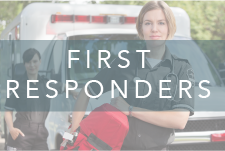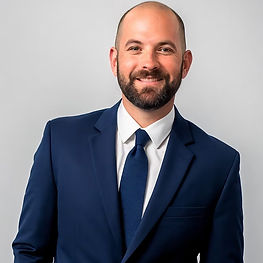What Is Vicarious Trauma?
- Dec 4, 2020
- 7 min read
Updated: Sep 4

Dealing with the aftermath of a traumatic event is difficult, even when you haven't experienced it firsthand. This is called vicarious trauma, and it can deeply affect your mental and emotional well-being. We'll explore the definition, signs, and coping mechanisms for vicarious trauma, providing you with a clear roadmap to understanding and addressing its impact on your life and the lives of those you care about.
What is vicarious trauma?
Vicarious trauma is the experience of secondary trauma through repeated exposure to graphic accounts or images of traumatic events. This can cause a profound and negative shift in a person's worldview, leading to feelings of sadness, anxiety, and a loss of hope.
While the definition is a great start, there's more to understand about this complex psychological response. Keep reading to learn the key signs to watch for in yourself and others, as well as practical strategies for healing and self-care.
What Is Vicarious Trauma and How Does It Affect You?
Seeing and experiencing disasters and traumatic events with one’s own eyes can be a life-altering experience. Images of disaster and loss can stick with a person, creating intrusive thoughts and causing a person to seek refuge from their mental state. The effects of this trauma can infiltrate every aspect of a person’s life, compromising one’s mental and emotional health.
It can also carry several social or professional hardships and may even develop into post-traumatic stress disorder (PTSD). However, the effects of traumatic experiences can have an impact on people who may not have seen or experienced the disastrous event firsthand.
This is called vicarious trauma, and having a vicarious trauma definition, knowing the signs of vicarious trauma, and how to deal with vicarious trauma in oneself and loved ones can all help in addressing the effects of disastrous events in many peoples’ lives.
How To Define Vicarious Trauma
Vicarious trauma is experiencing the effects of traumatic events through a secondary source. News outlets covering shootings, natural disasters, or wars can all include graphic, disturbing imagery that can expose a person to the horrors of a traumatic situation through a second-hand lens.
Vicarious trauma can set in after repeated exposure to these sources, and constant exposure to these difficult stories or images can have a very intense effect on an individual. Viewing crime scene photographs or listening to detailed recounts of traumatic events can all cause a person to begin to alter their worldview.
Vicarious trauma can happen to anyone, but first responders and counselors themselves have an increased risk of experiencing these effects due to their proximity to those who have suffered from traumatic events. Over time, the constant exposure to trauma can prompt an individual to see the world itself through a negative lens, bringing the feelings of exhaustion, sadness, depression, anxiety, and even an overall lack of hope.
Vicarious trauma is often equated to compassion fatigue, but there is a key difference between the two. Compassion fatigue refers to the inherent physical and emotional exhaustion of helping others, while vicarious trauma can manifest as a profound shift in a person’s worldview as a whole, creating a more bleak outlook on the world at large.

Vicarious Trauma Symptoms
Vicarious trauma can present itself in several different ways. Each person may experience it differently or have their definition of vicarious trauma and what it means to them based on their unique perspective.
However, there are signs to help you identify vicarious trauma in yourself or loved ones. Those who are first responders or counselors may benefit from a vicarious trauma assessment themselves, as a way to keep a healthy outlook and level of self-care while dealing with the stresses of their occupation.
Vicarious trauma can make it difficult to manage one’s own emotions, so feelings of anger, irritation, or sadness expressed towards the outside world may become more prevalent. These feelings can be a personal response to firsthand accounts of others in their care, or can even feel directionless.
Pessimism and cynicism may become apparent in a person’s language, and those experiencing vicarious trauma may even become unfocused, isolated, or shut themselves off from others around them in an attempt to protect themselves from their now deeply uncomfortable worldview.
Fatigue, exhaustion, and difficulty sleeping can all become problematic, and a person may even turn to destructive coping mechanisms such as drugs or alcohol to further detach themselves from the constant exposure to traumatic or tragic stories.
For first responders and trauma or mental health counselors, these symptoms can make it very difficult to safely do their work. Having difficulty coping with the constant exposure to trauma while continuing to be put in new traumatic situations can complicate the ability to develop some sort of vicarious trauma self-care, toolkit, or treatment strategy.
Providing vicarious trauma training to those in occupational fields prone to traumatic events or exposure to accounts of trauma can help each person best prepare for the possibility. However, it is still important to reinforce and encourage the idea of reaching out to professionals for help, if needed.

How To Deal With Vicarious Trauma
Dealing with vicarious trauma can be exceptionally difficult, as it is the result of a long period of repeated exposure to troublesome and negative recounts of life-altering experiences. However, vicarious trauma treatment is possible and helping others overcome the effects of their vicarious trauma can begin to shift one’s worldview back into a less cynical, or even optimistic, light.
Helping a person tend to their basics each day, such as maintaining appointments, keeping a healthy diet, and encouraging a consistent sleep schedule can help a person regain much of the physical and emotional energy needed after a long period of exhaustion and fatigue. Promoting self-care, or even demonstrating the practice yourself for a person suffering from vicarious trauma can scaffold the practice for implementation in others.
Inviting the person along to one’s self-care or therapeutic outlets can help them further direct their negative energy in a more positive direction, rather than leaving it to swell or otherwise move towards destructive coping mechanisms. Exploring self-care outlets that challenge one’s worldview may be especially impactful, such as the use of media therapy or cinema therapy, which can showcase the possibility of happy endings even amidst hardship.
How Can You Support Someone Recovering from Vicarious Trauma?
Although these may be dismissed as fiction at first, they can ultimately help by giving the person an emotional break while reintroducing the idea of optimism and happy endings into daily life. Overcoming vicarious trauma can take a long time, as it often has spent a long time eroding one’s worldview and emotional state.
Learning to help someone experiencing vicarious trauma may mean forgiving emotional outbursts and cynicism that may be present, as well as working out flexible schedules to compromise a person’s difficult emotional state. However, healing is possible, and staying alongside a person through their trauma can be the motivation and sign itself that positivity and recovery are achievable goals.
Frequently Asked Questions:
• What is the difference between vicarious trauma and compassion fatigue?
Vicarious trauma is a profound shift in a person’s worldview, while compassion fatigue is the inherent physical and emotional exhaustion that comes from helping others.
• Who is most at risk of experiencing vicarious trauma?
While anyone can experience vicarious trauma, first responders and counselors have an increased risk due to their constant proximity to those who have suffered from traumatic events.
• What are some common signs of vicarious trauma?
Common signs include difficulty managing emotions, feelings of anger or sadness, pessimism, social isolation, fatigue, and using destructive coping mechanisms like drugs or alcohol.
• How can I help someone who is dealing with vicarious trauma?
You can help by encouraging them to maintain a consistent sleep schedule and healthy diet, promoting self-care practices, and demonstrating these practices yourself.
• Is it possible to recover from vicarious trauma?
Yes, healing from vicarious trauma is possible. While it can take a long time, helping a person work through their trauma can begin to shift their worldview back to a more optimistic one.
Experiencing the effects of vicarious trauma can be an overwhelming and isolating journey. At Chateau Health and Wellness Treatment Center, we understand what you're going through, and our dedicated team is here to help you navigate these complex feelings. We believe in taking a proactive approach to your mental and emotional well-being, and we've developed comprehensive strategies to help you or a loved one overcome the challenges of vicarious trauma. Our goal is to work alongside you, providing the tools and support you need to reclaim a sense of hope and optimism. If you're ready to start your healing process, we're here to assist you. Contact us today at (435) 222-5225 and let us be your partner in recovery.

About The Author
Ben Pearson, LCSW - Clinical Director
With 19 years of experience, Ben Pearson specializes in adolescent and family therapy, de-escalation, and high-risk interventions. As a former Clinical Director of an intensive outpatient program, he played a key role in clinical interventions and group therapy. With 15+ years in wilderness treatment and over a decade as a clinician, Ben has helped countless individuals and families navigate mental health and recovery challenges.
Danny Warner, CEO of Chateau Health and Wellness
Brings a wealth of experience in business operations, strategic alliances, and turnaround management, with prior leadership roles at Mediconnect Global, Klever Marketing, and WO Investing, Inc. A graduate of Brigham Young University in Economics and History, Danny has a proven track record of delivering results across diverse industries. His most transformative role, however, was as a trail walker and counselor for troubled teens at the Anasazi Foundation, where he directly impacted young lives, a personal commitment to transformation that now drives his leadership at Chateau.
Austin Pederson, Executive Director of Chateau Health and Wellness
Brings over eight years of experience revolutionizing mental health and substance abuse treatment through compassionate care and innovative business strategies. Inspired by his own recovery journey, Austin has developed impactful programs tailored to individuals facing trauma and stress while fostering comprehensive support systems that prioritize holistic wellness. His empathetic leadership extends to educating and assisting families, ensuring lasting recovery for clients and their loved ones.










